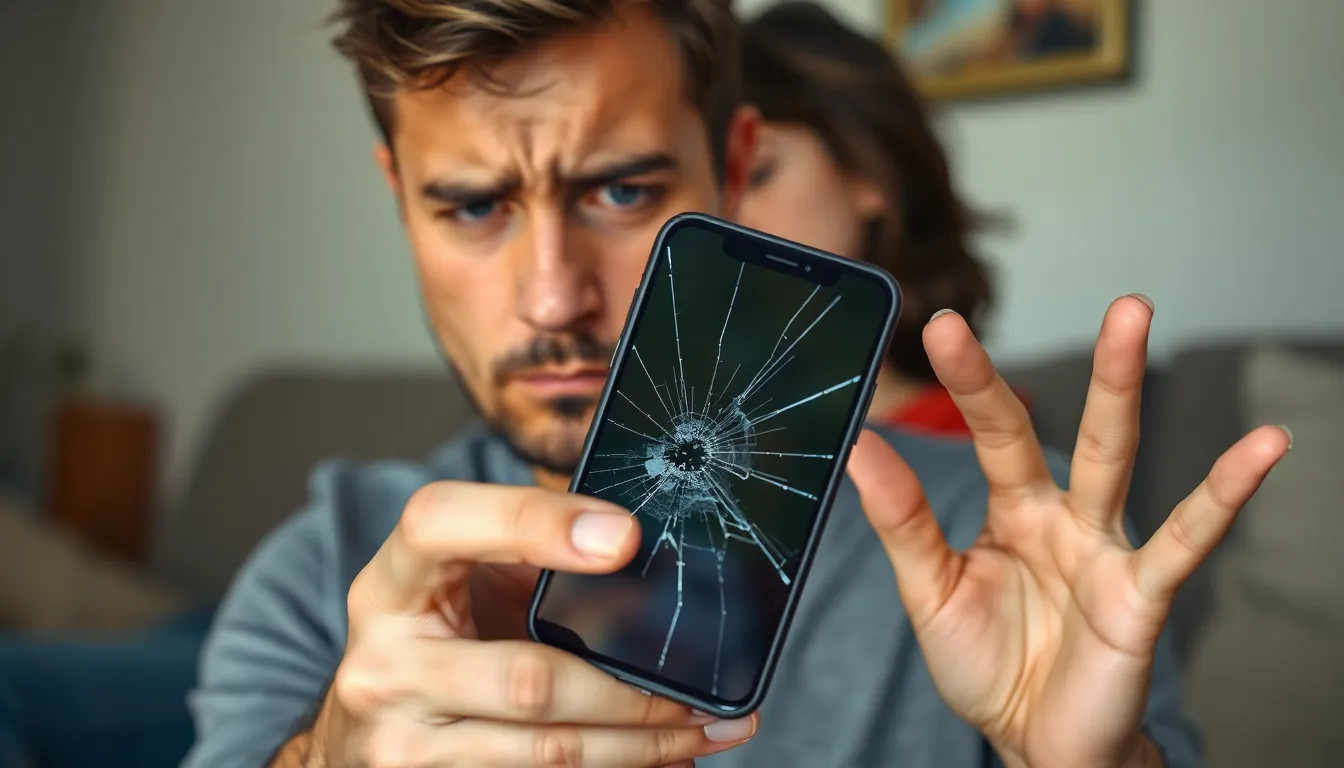Table of Contents
TogglePicture this: you’re frantically searching for your iPhone, only to realize it’s broken and you can’t turn off Find My iPhone. Talk about a tech nightmare! It’s like trying to make a sandwich with no bread—frustrating and a tad ridiculous. But don’t worry, there’s hope for your digital dilemma.
Understanding Find My iPhone
Find My iPhone is a feature that helps users locate lost devices. This tool plays a crucial role in safeguarding personal information and deterring theft.
What Is Find My iPhone?
Find My iPhone is an Apple service that uses GPS and Internet connectivity to track devices. When activated, it displays the device’s location on a map. It can also emit sounds, lock the device, or erase its contents if needed. Users access this feature through their iCloud account or the Find My app. Activation requires the use of an Apple ID, ensuring that only authorized users have access.
Importance of Turning It Off
Turning off Find My iPhone holds significant importance, especially when dealing with a broken device. Deactivation facilitates the transfer of ownership or servicing without complications. When someone intends to sell or give away the device, it’s vital to disable this feature to avoid issues with the new owner. Additionally, some repairs may require the feature to be turned off to access the device’s software. Ensuring that Find My iPhone is disabled provides a smoother experience in these situations.
Situations Where Phone Is Broken

Broken devices present unique challenges when it comes to turning off Find My iPhone. This section covers specific scenarios where you might face difficulties.
Common Scenarios
Device screens may be cracked or unresponsive, preventing users from accessing settings. Users might also experience hardware malfunctions that inhibit interaction with the device. Moreover, devices may be completely inoperable due to water damage or other serious issues. In such cases, relying on iCloud to manage Find My iPhone is essential. Accessing your iCloud account through a computer allows for the necessary deactivation steps. Understanding these situations helps users prepare for handling Find My iPhone effectively.
Assessing the Damage
Identifying the extent of damage is crucial for determining options. A shattered screen might still allow some functionality, whereas a completely nonresponsive phone presents more challenges. Users should check for signs of damage like discoloration and cracks. Testing basic features, such as sound or vibration, can provide further insights. In cases of water damage, immediate action is vital to prevent further issues. Knowing the device’s condition enables users to decide whether to repair or deactivate Find My iPhone through their iCloud account.
Methods to Disable Find My iPhone
Disabling Find My iPhone can be critical when dealing with a broken device. Several effective methods allow users to achieve this goal.
Using iCloud on a Computer
Accessing iCloud via a computer offers a straightforward way to disable Find My iPhone. Users start by signing into their iCloud account at iCloud.com. Once logged in, they navigate to the “Find iPhone” section. From there, select “All Devices” and choose the broken iPhone. After selecting the device, an option appears to remove it from the account. Confirming this action disables Find My iPhone. This method provides a reliable alternative, especially when the device is unresponsive.
Contacting Apple Support
Reaching out to Apple Support serves as another solution for disabling Find My iPhone. Users can call or chat with Apple representatives for assistance. They may need to provide details such as their Apple ID and device information. Apple Support can guide them through the process, even when the device is inaccessible. This support option ensures users get expert help when navigating technical challenges.
Alternative Solutions
If the device remains unresponsive, other options exist for turning off Find My iPhone.
Removing the Device from Your Account
Accessing iCloud via a computer allows users to manage their devices. Begin by logging into the iCloud account linked to the broken iPhone. Navigate to the “Find iPhone” section, where listed devices appear. Users can select the broken device and proceed to remove it from their account. Confirmation of this action ensures that Find My iPhone deactivates, providing the necessary steps for transferring ownership or servicing.
Using Recovery Mode
Assess the option of using Recovery Mode to disable Find My iPhone. This mode may help to restore the device or enable access for deactivation. Users should connect the broken iPhone to a computer and open iTunes or Finder. Holding the appropriate buttons triggers Recovery Mode, allowing the device to be recognized by the computer. Follow the prompts to restore the device, which may indirectly turn off Find My iPhone and facilitate repairs or data migration.
Deactivating Find My iPhone on a broken device may seem daunting but it’s entirely manageable with the right approach. Utilizing iCloud or contacting Apple Support can provide the necessary steps to ensure the feature is turned off. This not only simplifies the process of repair or transfer but also protects personal information. By assessing the device’s condition and understanding available options, users can navigate this challenge effectively. With these strategies in hand, regaining control over their device becomes a straightforward task.




